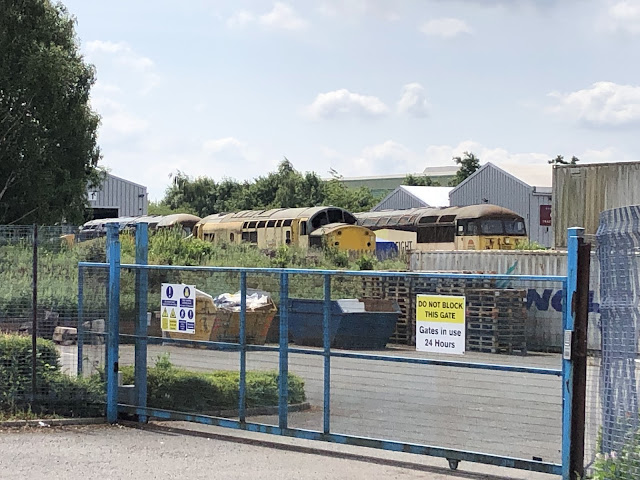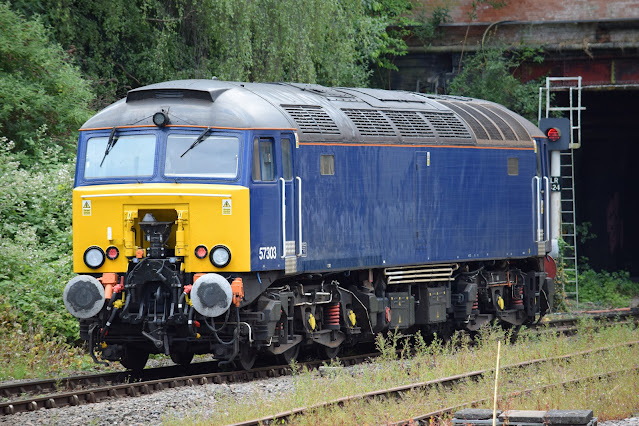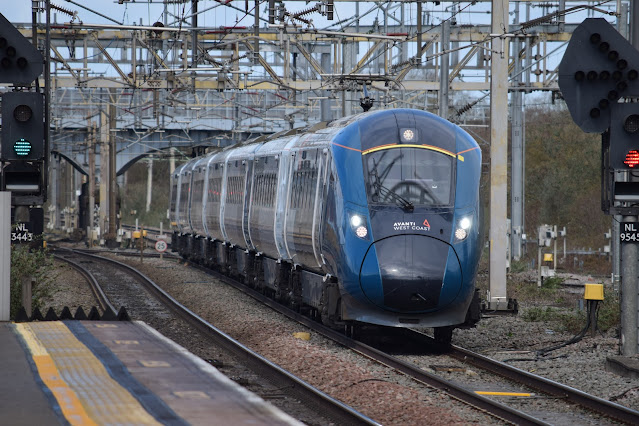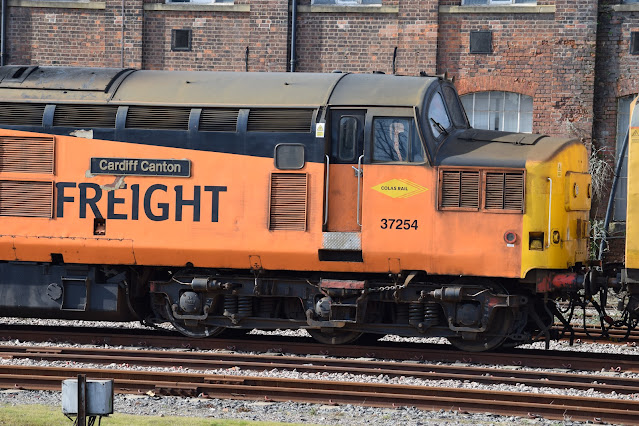“Singin’ on the Train”
Carlton Male Voice Choir at the Severn Valley Railway,
Saturday 16th August 2025
This was quite an organisational feat and a carefully
choreographed operation mounted by the heritage line. Seven male voice choirs from
different parts of the country descended on the SVR for a feast of sound. That
was in addition to a lot of chuffing from steam loco No. 4930 Hagley Hall and
some serious throbbing and whirring from diesels D1062 Western Courier and the
“Teddy Bear” Class 14, all providing interludes between the performances and
transport to the various singing venues.
The wonderful recreation of a Great Western Railway country
terminus at Kidderminster provided the focal point of the day, both starting
off and later winding up the event under the glass canopy, which certainly didn’t
detract from a sound quality angle. The Engine House at Highley, which serves
as the SVR’s large exhibits museum, provided venue number two for the choir,
and after that it was all aboard once more to the end of the line at Bridgnorth
for a further performance on the station approach. Then it was straight back to
Kidderminster for the finale, eventually involving all the choirs together.
By the end of the day,
members of the Carlton Male Voice Choir had sung for a total of one hour thirty-six
minutes and forty seconds, during which time they had run through twenty-seven
different songs, according to their brief. That was in addition to any
impromptu entertainment that was likely to break out in transit. There was even
the possibility of a few more numbers at the end of the day for those who stuck
it out for the advertised Afterglow repertoire session at the King and Castle
pub on the station site, by which time participants would have been on active
duty for over nine hours. With at least two hours outwards from Nottingham and
the same back home again, that certainly counts as a full day out by anyone’s
standards.
Our little party of fans tracked the Carlton crew
throughout. The canopy above the concourse at Kidderminster station softens the
direct sunlight and provided a splendid location for the initial set. At this
point, I made a diversion to the adjacent Kidderminster Railway Museum for the
Preview of the Guild of Railway Artists’ annual Railart exhibition, to which I
had also coincidentally been invited and which I'm happy to recommend. It is
open until Sunday 28th September. Two old friends greeted each other
in front of the pictures in the hall. “Hello. How are you getting on?” “Oh, I’m
fine, thanks. Haven’t been to hospital since yesterday.”
I caught the 2.00 from Kiddy to catch up with the choir, who
were having their lunch at Highley prior to singing at 2.45. Oh dear. We were
going to be late away but no explanation was provided as to why, so I found an
attendant. “An issue on the dining car, sir. Soon as we sort it, we’ll be off.”
I envisaged one of the cake-stands I’d seen being carefully loaded on board on
a trolley in preparation for afternoon tea collapsing and spilling scones and
eclairs all over the carriage floor. By this time the habitual moaners in our
carriage were going into overdrive and the guard was getting it in the neck
about how a missed connection at Bridgnorth was going to ruin the rest of their
lives. The guy opposite me started recording the encounter on his mobile phone,
which momentarily struck me as quite a good idea, though actually I’m not that brave. The
whistle was blown and the flag finally waved at 2.17. We were back on track and
I would be at Highley in time for the choir’s next performance, after all. A
uniformed SVR volunteer hurried through the coach armed with a dustpan and a
long brush, more or less confirming my cake-stand theory.
After the Highley performance there was still time for a cup
of tea or an ice cream before catching the 16.06 to the northern terminus.
There is a nice café up the stairs at the Engine House, along with a spacious
balcony to watch the trains go by. The Western diesel did the honours to prove
the point, while we chatted outside with some members of the choir. The railway
was new ground for them, but they were appreciative of the beautiful scenery in
the Severn valley and the professionalism of the set-up on the railway, which
like most heritage lines depends largely on the goodwill of volunteers of all
ages for its continued survival. They were pleased to have been well-received
and thought they had done enough to be invited back to what has apparently now become
a regular part of the railway’s annual calendar.
Onwards again to the early evening slot at Bridgnorth in the
courtyard at the front of the station. The railway has extended the adjoining pub
and refreshment area here in recent times and picnic tables are provided for
just such moments, during this warm summer of ’25. Local bikers, dog walkers using
the footbridge to the nearby town centre and regular pub-goers enjoying an
early evening pint were amongst the crowd being serenaded and it was striking
how appropriate the song selection process had been and how pleased the largely
spontaneous audience was to hear so many recognisable offerings. Main man, Ian,
skilfully switched from conductor to presenter and back again. His relaxed and
friendly demeanour won the audience over with ease. Right on cue, drinks
magically appeared for the two soloists, then it was back on board the train
for the last leg of the journey to Kidderminster.
Our day out was coming to a close. The rest of the family headed
for the nearest chip shop, which happened to be opposite the station. The board
outside showing opening times thoughtfully announced its “Gluten Free
Wednesdays!”, except that it was Saturday, so a long wait for gluten-free
batter if that was a requirement. We had chosen, instead, the first pub serving
food that we came to on Kidderminster’s urban fringe, so we can recommend The
Swan at Blakedown for some excellent pub grub, friendly and speedy service and
all at a reasonable price. Our excursion was complete. On the drive home, I
wondered if Ian - or anyone else for that matter - had noticed my enthusiastic rendition
of the “Oh-Oh-Oh, Oh-Oh-Oh” in the bridge of the choir’s version of Coldplay’s
Viva La Vida. I was pretty sure that it was impressively in tune, throughout, as a matter of fact.




















































